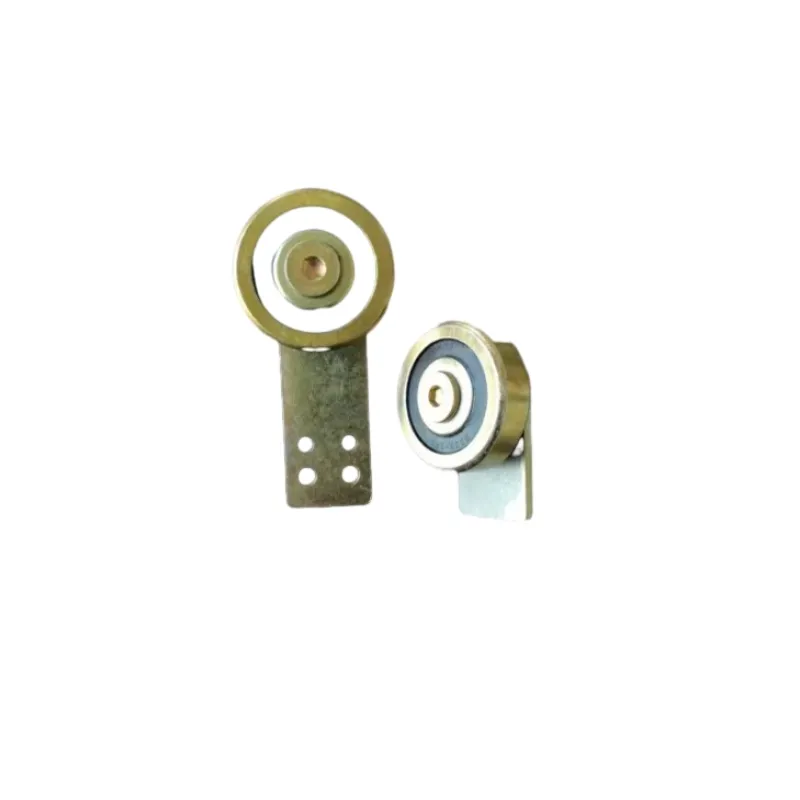
Dec . 27, 2024 19:59 Back to list
cylindrical roller bearing types
Understanding Cylindrical Roller Bearing Types
Cylindrical roller bearings are a critical component in various types of machinery, offering robust performance and support for radial loads. Their design and functionality make them suitable for applications in industries ranging from automotive to aerospace. This article explores the different types of cylindrical roller bearings, their characteristics, applications, and key benefits.
What Are Cylindrical Roller Bearings?
Cylindrical roller bearings consist of cylindrical rollers that are placed between an inner and outer ring. This design allows them to carry high radial loads while maintaining a low friction coefficient. Unlike ball bearings, which use spherical elements, cylindrical roller bearings can handle heavier loads and are better suited for high-speed applications due to their size and shape.
Types of Cylindrical Roller Bearings
Cylindrical roller bearings can be grouped into several categories based on their design and the specific application they are built for
1. Single Row Cylindrical Roller Bearings - These are the simplest form of cylindrical roller bearings. They consist of a single row of rollers and are typically used in applications where there are primarily radial loads. Single row bearings are known for their versatility and can accommodate moderate axial loads in one direction.
2. Double Row Cylindrical Roller Bearings - As the name implies, double row bearings feature two rows of rollers. They offer increased load-carrying capacity and are particularly useful for applications where space is limited but high radial load resistance is required. Double row bearings can accommodate both radial loads and axial loads in two directions.
3. Multi-Row Cylindrical Roller Bearings - These bearings consist of more than two rows of rollers. Multi-row cylindrical roller bearings are commonly used in heavy machinery and equipment where extreme load conditions exist, such as in rolling mills or large electric motors.
4. Cylindrical Roller Thrust Bearings - Designed specifically to accommodate axial loads, cylindrical roller thrust bearings are a variation primarily utilized in applications where thrust loads are significant. They consist of cylindrical rollers arranged between a thrust washer and a housing.
cylindrical roller bearing types

5. Full Complement Cylindrical Roller Bearings - These bearings contain the maximum number of rollers possible, eliminating the need for a cage. While they can carry a higher radial load due to increased roller contact, their design may limit speed due to increased friction. Full complement bearings are particularly useful in low-speed applications where load-carrying capacity is paramount.
Key Features and Advantages
Cylindrical roller bearings come with several key features that contribute to their widespread use
- High Load Capacity The design of cylindrical roller bearings allows them to carry larger loads compared to ball bearings, making them ideal for bearings subjected to heavy loads.
- Reduced Friction The line contact between the cylindrical rollers and races helps minimize friction, which is beneficial for high-speed applications.
- Durability and Reliability These bearings are known for their robustness, often featuring enhanced durability characteristics such as improved resistance to wear and fatigue.
- Versatility With various designs available (single-row, double-row, etc.), cylindrical roller bearings can be selected based on the specific needs of an application.
- Easy Installation Most cylindrical roller bearings are straightforward to install and can be serviced with minimal downtime.
Conclusion
Cylindrical roller bearings play an essential role in the efficient functioning of machinery across multiple sectors. Their various types—ranging from single row to multi-row configurations—cater to diverse needs, from handling high radial loads in motors to supporting axial loads in thrust applications. Understanding the different types of cylindrical roller bearings, their characteristics, and their advantages can help engineers and designers select the right bearing for their specific applications, ultimately leading to enhanced performance and reliability of machinery. As technology continues to evolve, the development of even more specialized cylindrical roller bearings can be expected, further expanding their utility in modern engineering.
Latest news
-
Ball Bearing 6001 – Reliable Deep Groove Bearings for Machinery & Industry
NewsNov.24,2025
-
Comprehensive Guide to 6305 2rsr Bearings – Specs, Uses & Vendors
NewsNov.24,2025
-
In-Depth Guide to 6003z Bearing Dimensions: Specs, Applications & Vendors
NewsNov.23,2025
-
Understanding the 6201 Z Bearing - Specifications, Applications, & Future Trends
NewsNov.23,2025
-
Everything You Need to Know About 6001 C3 Bearing – Specs, Uses, and Advantages
NewsNov.22,2025
-
6208 zz Bearing – Key Technical Insights, Applications & Vendor Comparison
NewsNov.22,2025
